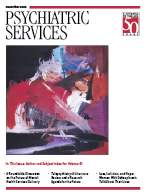Pharmacotherapy for Mood, Anxiety, and Cognitive Disorders
With the proliferation of new drugs and how-to manuals for medication management by self-proclaimed experts, it is refreshing to read a book by leading thinkers in the field that stands back with some humility and surveys the landscape of current pharmacotherapy.
Although less than optimal, the efficacy of current pharmacologic interventions for pathological alterations in mood, anxiety, and cognition is remarkable given our limited understanding of the complex pathophysiology of these disorders. Advances in genetics and neurophysiology have ushered in a new era in psychotherapeutics. Compounds are being custom-designed for specific neuropharmacological action, not only for specific descriptive phenomena or syndromes.
Halbreich and Montgomery have assembled the efforts of 90 notable contributors into a timely and durable text on the state of the art of pharmacotherapy for the treatment of particular disorders. The contributors also summarize advances and future directions in brain research. Throughout its 35 chapters, the editorial theme unifying this text is the "circularity of the wheel of progress" in pharmacotherapy. Available treatments inevitably lead to greater diagnostic precision, driving investigations into pathophysiology, which in turn expands knowledge, revises conceptualizations, and leads to new treatments.
The survey of available medications and contenders for the treatment of mood, anxiety, and cognitive disorders in this book is as comprehensive as the list of contributors. The scope of the review in this book is encyclopedic, with more than one-third of the pages devoted to reference citations. Underlying mechanisms and background for current treatments are described in detail, and the rationale for new strategies and medications is discussed. Scientific inquiry into new theories of pathophysiology is translated into emerging therapeutic strategies for mood and anxiety disorders and normal and pathological cognitive decline in later life.
But the real virtue of this book is its ability to dispel any illusion that there is a singular biological explanation for most psychopathology and a simplistic pharmacologic solution. The authors are most successful in communicating a profound respect for the dynamic interplay between multiple complex neurobiological systems that produce phenomena we label as normality or pathology. The more we know, the more we realize how little we understand.
While discussing the pharmacotherapeutics of recognized disorders, the authors repeatedly indicate, directly and indirectly, that current syndromic diagnostic categories must eventually evolve toward diagnoses based on neurophysiological pathology as well as behavior. The chapter on signal amplification in psychiatric diagnosis is a particularly cogent articulation of the growing tension between biologic research and diagnostic research in psychiatry. This chapter emphasizes that progress in biological psychiatry is contingent on progress in neurobiology and on research into proper characterization and assessment of abnormal behavior. Diagnostic research has not kept pace with biological research, leaving in question the utility of many aspects of the DSM system as a diagnostic framework for the development of specific pharmacotherapeutic agents.
Make no mistake, this book is not light reading. But it is very good reading. It could even be considered essential reading for physicians who want to understand the rationale behind current pharmacotherapy for mood, anxiety, and cognitive disorders and to anticipate the near future in biological psychiatry.
Dr. Sumner is associate professor of psychiatry and director of psychiatric residency programs at West Virginia University School of Medicine in Morgantown.



